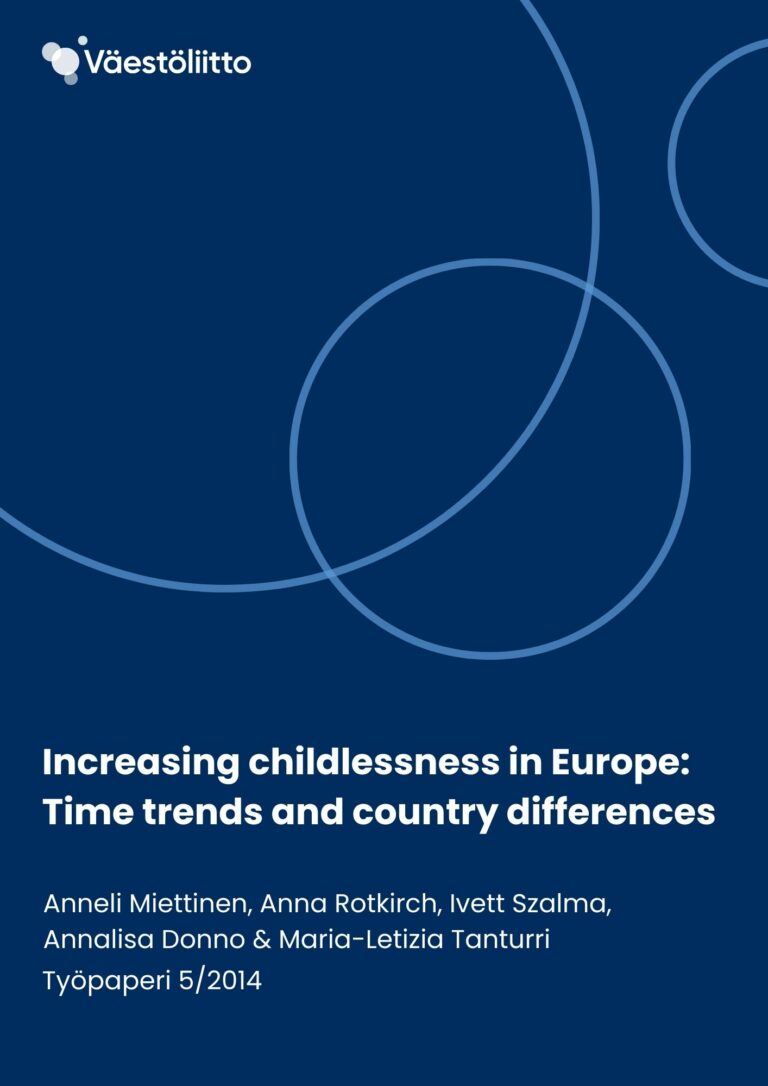Increasing childlessness in Europe
Time trends and country differences
This working paper provides an overview of trends in female and male childlessness in Europe over the last decades and explores associations between cohort childlessness and national demographic and social indicators. We also estimate proportions of voluntary childless people.
Results show that childlessness has increased at ages 30–34 and 40–44 years among both men and women throughout Europe, with few exceptions. Female childlessness at ages 40–44 years remains low (below or at 10%) in Bulgaria, the Czech Republic, Estonia, Hungary, Lithuania, Poland, Portugal, Romania and Russia, moderate (11–15%) in France, Belgium, Georgia, Germany, Norway, Slovak Republic, Slovenia, Sweden, and the US, and high (around 20%) in Austria, Italy, Finland, the Netherlands and the UK. Male lifetime childlessness is highest (above 23% among men aged 45–49) in Finland, Italy, Germany, the UK and the Czech Republic.
Julkaisun tiedot
| Julkaisija | Väestöliitto, Väestöntutkimuslaitos (The Population Research Institute) |
|---|---|
| Kirjoittaja | Anneli Miettinen, Anna Rotkirch, Ivett Szalma, Annalisa Donno & Maria-Letizia Tanturri |
| Sivumäärä | 56 |
